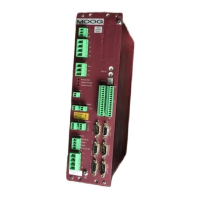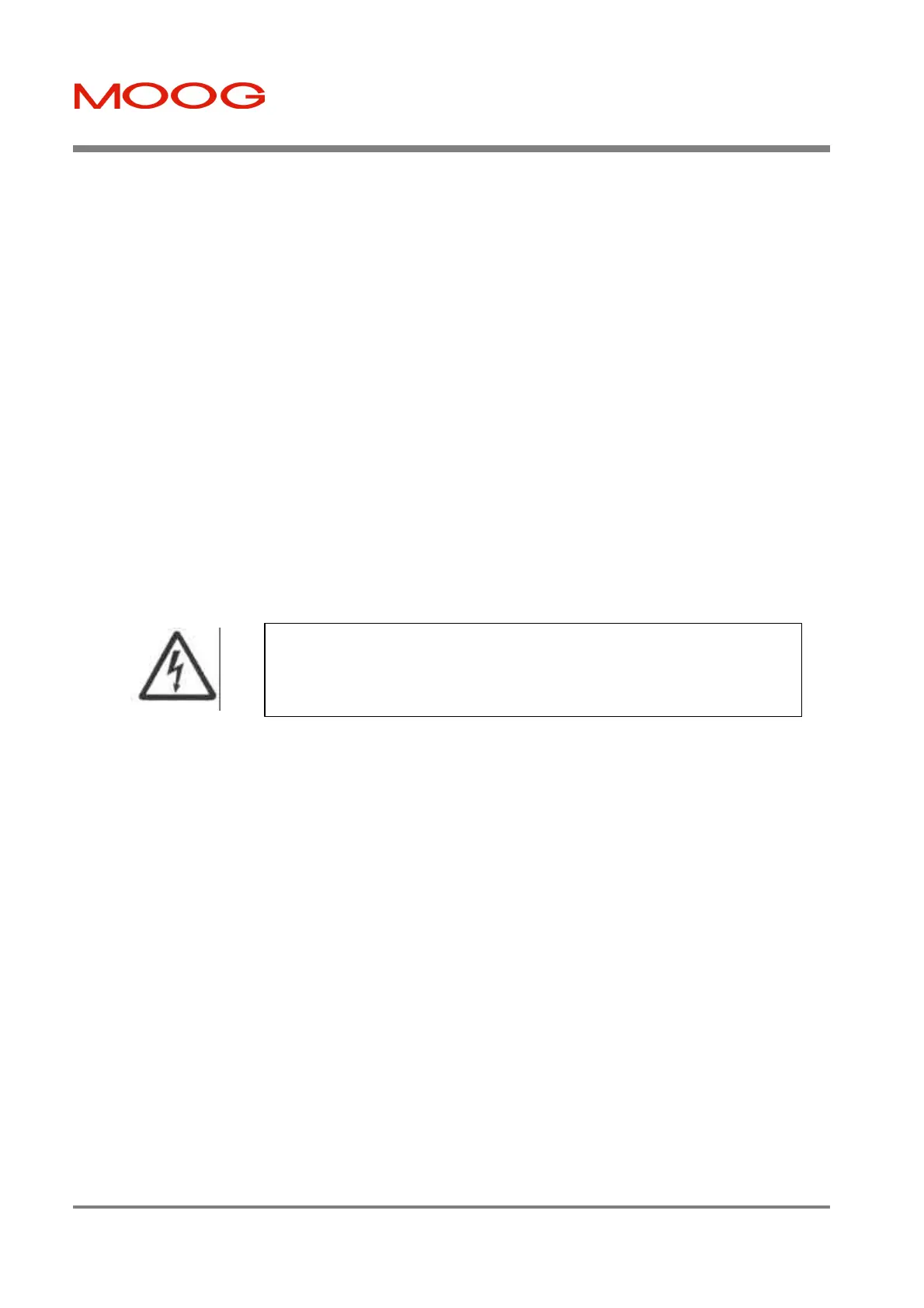T200 User's Manual SECTION 6: T200 FUNCTIONAL OVERVIEW
PAGE 6-16
energy. The frequency at which the Regeneration circuit operates is dependent upon the magnitude of the Regeneration
energy.
The internal Regeneration resistor is protected by an internal electronic circuit breaker which disables Regeneration
when the internal resistor’s rating is exceeded.
If the Regeneration energy exceeds the capacity of the internal Regeneration circuit, a higher capacity external
Regeneration resistor must be used. Section 3.13 described how to install such a resistor. If the external resistor’s rating
is exceeded, the T200 Servo-drive reports a warning to the user, via both the 7-segment display (U6 or E6 warning) and
the activation of the THRM_LIM digital output.
A suitably rated fuse to short-circuit protect the external Regeneration resistor is fitted internally in the T200-310, 410
and 510 servo-drive. The fuse is sized to protect the external resistor option available for that particular T200 model, as
described in Section 3.13. The user should not change this fuse. If this fuse is blown, then the T200 must be returned to
Moog for repair. For T200-610 and T200-710 servo-drives, the fuse must be provided externally.
For further information regarding the implemented regen resistor protection scheme see section 6.8 - Self Protection.
e) Monitoring and Fault Logic
When a.c. mains power is first applied to the PSU, the inrush charging current is limited. When the T200 senses that the
D.C. Bus has been charged up, the Soft Start Relay energises to switch the power supply into its normal configuration.
Note that a blown Regeneration fuse or an open internal Regeneration resistor will prevent the power supply from
starting up, and generate a fault indication ('F3' on the 7-segment display) .
When a.c. power is removed, a fast discharge of the D.C. Bus occurs discharging internal high voltages.
A thermistor on the high power section heatsink is used to generate a PSU Over-temperature fault if the temperature of
the a.c. mains rectification circuitry exceeds its rating.
A fault condition is caused by any of the following:
• Regeneration Fuse Blown. The internal regeneration resistor fuse has been blown. Fault F3 is displayed on the 7-
segment display. The unit must be returned to Moog for repair.
• PSU Thermal Fault:- The Bridge Rectification Circuitry Heatsink temperature is excessive. Fault F4 is displayed on
the 7-segment dispay.
• Bus Overvoltage:- The D.C. Bus voltage exceeds 410Vd.c. The fault code F2 is shown on the 7-segment dispay.
Any faults detected are relayed to the control electronics where the appropriate diagnostic message will be displayed on
the seven segment display and appropriate action taken. T200 operation under fault conditions is described in Section
6.7.
High Power Section System Sequencing
High power sequencing is described in Section 3.10.
WARNING. The fast bus discharge circuitry may become damaged during
operation, or may not be operational if the F3 fault is active. The user should still
wait for 5 minutes after all power has been removed to begin service operations
on the T200.
Artisan Technology Group - Quality Instrumentation ... Guaranteed | (888) 88-SOURCE | www.artisantg.com

